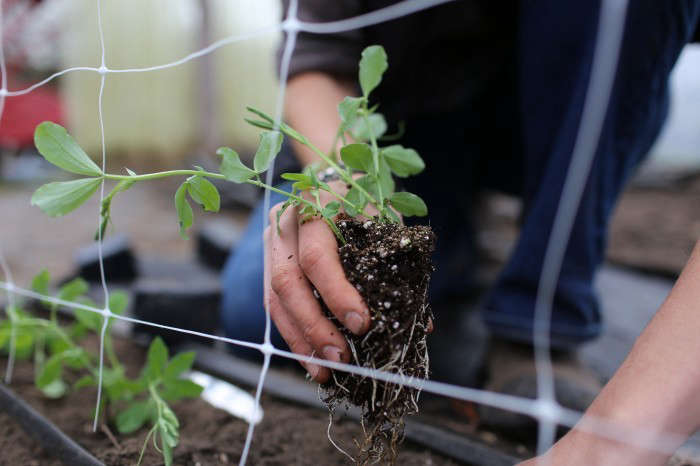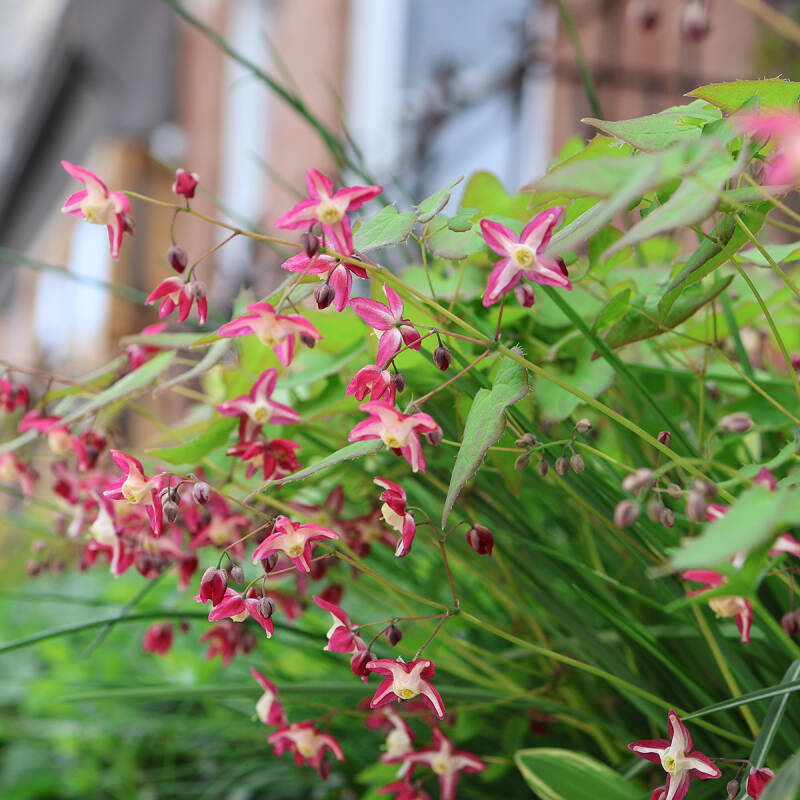Hoya Shooting Star, Hoya multiflora
When I was a kid, my parents used to drag me to nurseries where they would “dumpster dive” for discarded plants. Usually this happened after-hours, sometimes not, and either way the experience was mortifying. Years later, however, I found myself doing the same thing (but, of course, with permission from the nursery), and one time while rooting through a dumpster filled with plastic pots and sad petunias, I pulled out a battered and unmarked indoor plant I was unfamiliar with. Turns out, the mystery plant was a Hoya. I gave my new houseplant a rejuvenating plant spa treatment, found it a bright spot, and then left it to own devices. And guess what? Eventually it gifted me with the most striking and fragrant flowers. Ever since, I’ve been fascinated with Hoyas.
Please keep reading to learn more about Hoyas.

Also known as waxplants for their waxy leaves, Hoyas, in general, grow as epiphytes in tropical forests where they hang from or climb into trees like plant monkeys. With around 600 to 700 known cultivars, hybrids, and species—and with some Hoyas being epiphytic, succulent, non-succulent, shrubby or with a hanging or vine-like habit—there are many different ones to chose from. And, of course, not all Hoyas are simple to take care of or even easy to find. They were once popular in the ’60s through the ’80s, but these plants fell out of fashion. Today, they are making a comeback as more people hunt for exotic indoor plants that can withstand some neglect.
One Hoya to look for is Hoya Shooting Star, one of the easiest and most prolifically flowering Hoyas. It has dark green glossy leaves and is a bit more bushy, with an upright habit and grows 12- to 24-inches high by 8- to 18-inches wide. Most importantly, this plant forms large clusters of fragrant white and golden yellow blooms that resemble mini shooting stars. (Another easy-to grow-variety is the highly cultivated Hoya carnosa, a climbing type with woody stems and succulent-like leaves with fragrant nighttime blooms.)
To ensure a healthy and happy plant, try to mimic its natural warm habitat and choose a pot that is only 1 to 2 inches larger than the root ball and has sufficient drain holes. Hoyas, in general, like to be a bit pot-bound and don’t like to be disturbed, so re-pot only when truly necessary.
Cheat Sheet

- Add Hoya Shooting Star to a brightly lit porch, patio—or a bathroom with a regularly used shower (it will love the extra humidity).
- When this plant lives outdoors, its flowers attract bees, butterflies, and birds.
- It’s mildly toxic to pets and people if a large number of leaves are ingested.
- Interestingly, common milkweed (Asclepias syriaca) is in the same subfamily as Hoya.
Keep It Alive

- Place Shooting Star Hoya in a spot receiving very bright indoor light and with a minimum temp of 60 degrees F. Outdoors, this plant appreciates filtered morning or late evening sun in frost-free USDA Zone 11.
- Plant in well-draining and well-aerated potting soil that is mildly acidic. Never allow the soil to remain soggy or let the plant sit in standing water as this can cause stem and root rot.
- Let the soil dry out between watering. Also know that the plant will require a bit more water during the growing spring/summer months and less during the sleepy wintertime.
- New flowers develop on old flower stems so never cut off the old stems.
- This plant is easy to propagate using a stem cutting from new vines.
- Can be susceptible to mealy bugs and aphids. If you find only a few pests, try dipping a Q-Tip in alcohol and gently remove the little beasts. For a larger infestation problem, make a solution of warm water mixed with a few tablespoons of biodegradable soap and add it to a spray bottle and spray all the areas of the plant. Pro Tip: Never spray a solution on a plant that’s in direct sun or has very dry soil.
For more unusual houseplants, see:












Have a Question or Comment About This Post?
Join the conversation (0)